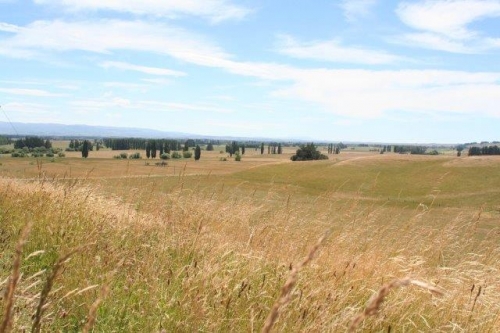I want to...
Current filter: Most popular
A to Z
Apply for a job
Biosecurity
Consents
Consultation
Contact Us
Environmental Data
Farmers Hub
Fix it or Report it
Information Request
Join an Event
Leasehold Land
Meetings
Rates
Water Metering
Have Your Say
Climate Forecast for Potentially Drier Summer
Published: 9 November 2018

Hawke’s Bay Regional Council’s latest climate briefing yesterday (8 Nov) gave the indication that people need to be prepared for a potentially warmer and drier summer, with lower river and aquifer levels.
The public presentation was attended by grower representatives and Ministry of Primary Industry staff.
Dr Kathleen Kozyniak, HBRC’s climate and air quality scientist, summarised October’s rainfall and soil moisture conditions and the forecast for the next three months. “We all know we had a lot of rainfall in September but October has been much drier, with only 50% of normal monthly rainfall. Most of that rain was in the north of the region, whereas other areas had only a third of their normal monthly rainfall.”
Soil moisture is below median levels in Central Hawke’s Bay and is causing concern, as some contractors aren’t planting fodder crops because it is too dry for crops to grow. On the Heretaunga Plains soil moisture is around normal, and north of Wairoa above normal.
Predictions are for an El Niño weather pattern to develop for summer but currently the pattern is in neutral.
“NIWA’s forecast for November to January is for near or below normal rainfall and soil moisture, and temperatures to be near or above average. Seasonal climate models suggest we might get more westerlies so possibly more rain in river headwaters and a bit more wind than last month.”
Rob Waldron, hydrology scientist, says that river flows are currently below or close to normal as they are receding as expected at this time of the year. Water take bans are already in place on a number of rivers.
“However although the lower than normal rainfall has affected most river flows, there were periodic thunderstorms that helped to boost coastal river flows.”
River flow data is available live on hbrc.govt.nz, search #riverflows, including graphs showing flow changes for all sites monitored by the regional council.
Simon Harper, senior groundwater scientist, outlined the condition of the region’s main Heretaunga and Ruataniwha aquifers.
“Groundwater levels are about normal for this time of the year and remained elevated during October due to storms recharging aquifers in September. Groundwater levels typically peak at this time of the year and begin their seasonal decline into early autumn,” he says.
The climate briefings are open to the public and are held in the Regional Council’s Chamber at 159 Dalton St, Napier. The schedule for the next briefings is:
Thursday, 13 December 2018, 9.00-10.30
Thursday, 7 February 2019, 9.00-10.30
Thursday, 7 March 2019, 9.00-10.30
Thursday, 4 April 2019, 9.00-10.30
Disclaimers and Copyright
While every endeavour has been taken by the Hawke's Bay Regional Council to ensure that the information on this website is
accurate and up to date, Hawke's Bay Regional Council shall not be liable for any loss suffered through the use, directly or indirectly, of information on this website. Information contained has been assembled in good faith.
Some of the information available in this site is from the New Zealand Public domain and supplied by relevant
government agencies. Hawke's Bay Regional Council cannot accept any liability for its accuracy or content.
Portions of the information and material on this site, including data, pages, documents, online
graphics and images are protected by copyright, unless specifically notified to the contrary. Externally sourced
information or material is copyright to the respective provider.
© Hawke's Bay Regional Council - www.hbrc.govt.nz / +64 6 835 9200 / info@hbrc.govt.nz


